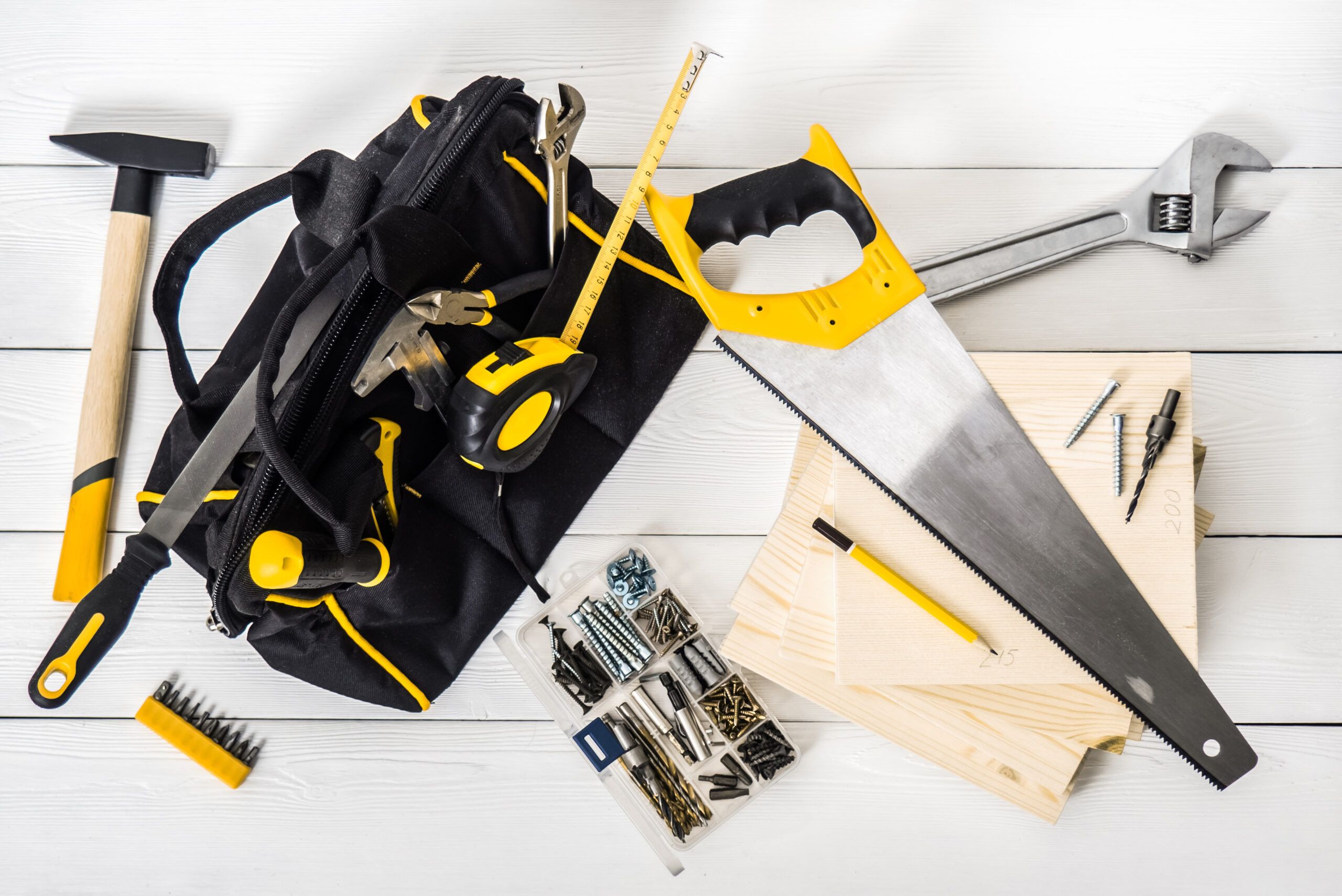Hundreds of types of tools are available depending on your needs, experience level, project, and home setup. However, some truths remain evident no matter what tool you’re using. Tools should be durable, reliable, and safe. They should also work as designed and provide clear instructions on operating them.
If you’re new to buying tools, it may be intimidating to narrow down your choices. We created this buyer’s guide to give you all the must-have information you need to know when shopping for tools.
Types of Tools
Here are some of the most popular and practical tools to keep on hand in your garage, basement, or shed.
Hand Tools
- Adjustable wrench: These everyday wrenches are great for tightening and loosening fasteners, nuts, and bolts.
- Allen wrench: An Allen wrench is an L-shaped tool used for loosening hexagonal screws.
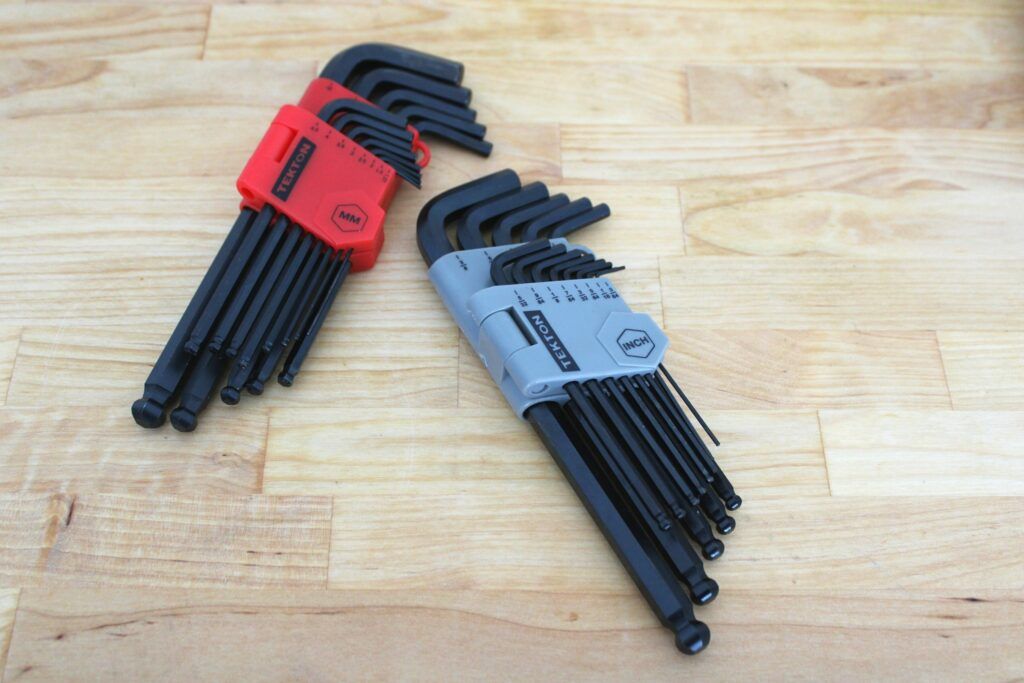
- Bolt cutters: Bolt cutters, which come in various sizes, are useful for cutting down through materials such as chains, padlocks, mesh, and wire.
- Caulk gun: Caulk guns hold cartridges filled with sealants, which you can use to seal cracks and gaps or bond materials.
- Clamps: Clamps help hold items in place as you work and come in several varieties, including hand clamps, spring clamps, and C-clamps.
- Drywall saw: Drywall saws help slice through the drywall on your wall, which you need for heavy-duty home renovation and restoration.
- Hammer: Every tool kit needs a high-quality hammer for hammering in nails, securing objects, or nondestructive striking.
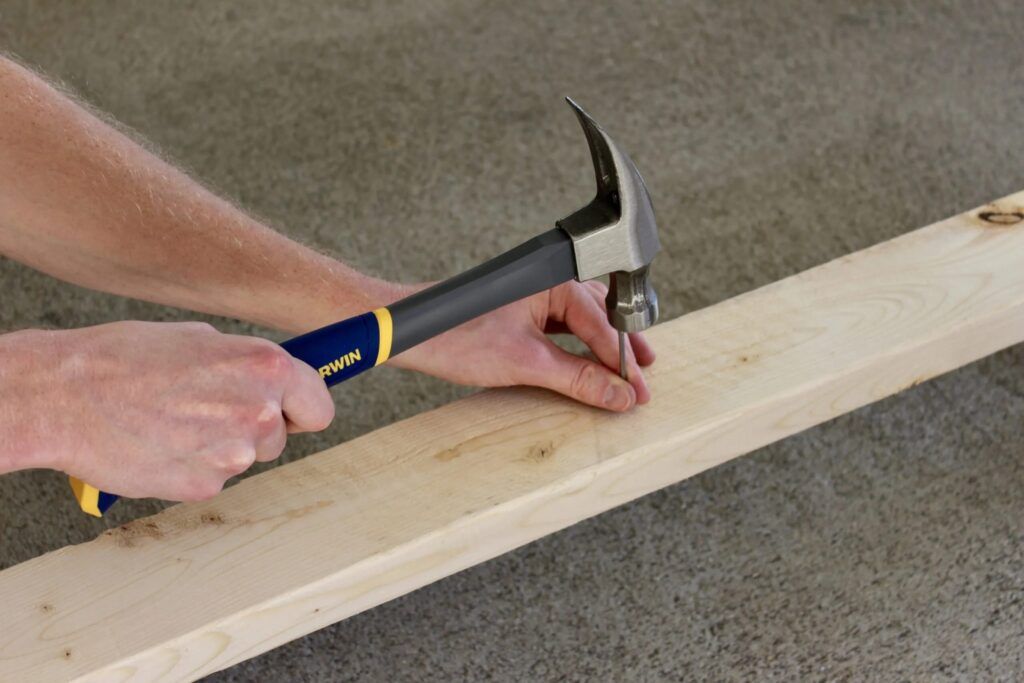
- Hand saw: Hand saws can cut wood into different shapes, prune branches, or cut through materials such as drywall and fiberglass.
- Multi-tool: Multi-tools provide multiple quick-use tools, such as pliers, hammers, wire cutters, and shears, in one convenient, portable design.
- Pliers: You can use pliers to grip or hold items in place, or they can help loosen nuts and bolts.
- Pocket chainsaw: While you use an electric chainsaw for more heavy-duty tasks, pocket chainsaws can be helpful for cutting through small pieces of wood, such as branches on a tree.
- Ratchet: Similar to a socket wrench, a ratchet can help loosen tough nuts and bolts.
- Rubber mallet: A rubber mallet is an alternative to a hammer that you can use when you need a lighter touch to avoid damaging surfaces.
- Screwdrivers: Screwdriver sets are a must-have for any homeowner, as they can insert and remove screws when putting together furniture, making small repairs, or when completing woodworking or metalworking projects.
- Sledgehammer: Sledgehammers can break through walls and doors or drive in heavy-duty bolts or stakes.
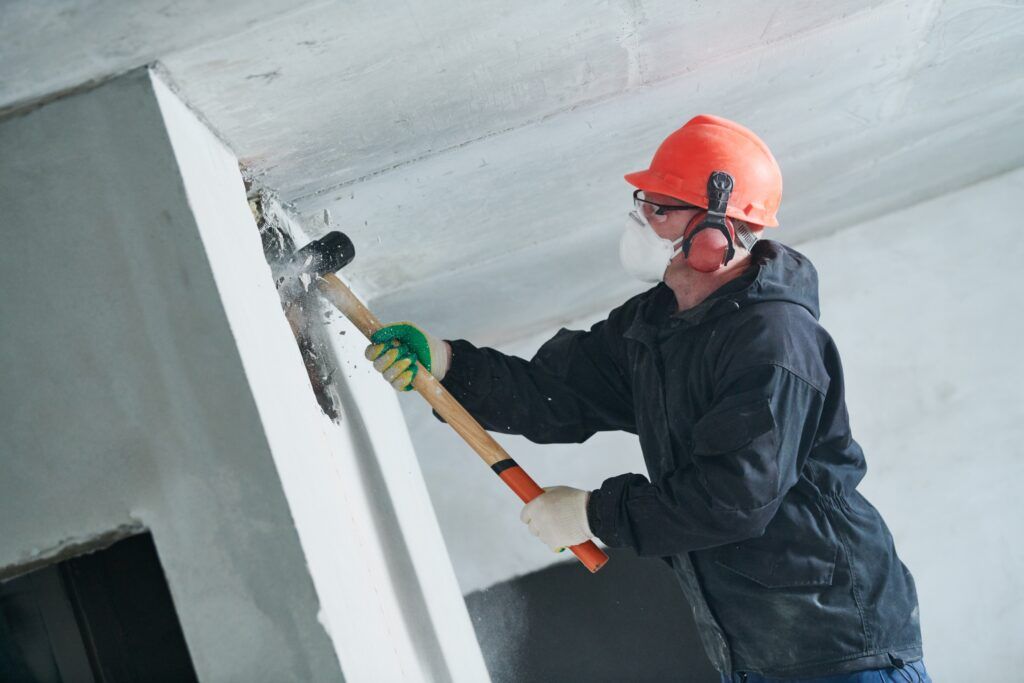
- Torque wrench: Torque wrenches help avoid under or overtightening by providing the proper torque levels when tightening fasteners.
Power Tools
- Band saw: Band saws are electric saws with long, sharp blades that can make straight, rounded, or curved cuts.
- Belt sander: A belt sander is a woodworking tool used for smoothing rough areas or leveling large surfaces by sanding with the grain.
- Benchtop drill press: These heavy-duty drill presses are for woodworking or metalworking projects when you need to bore precise holes of the same size.
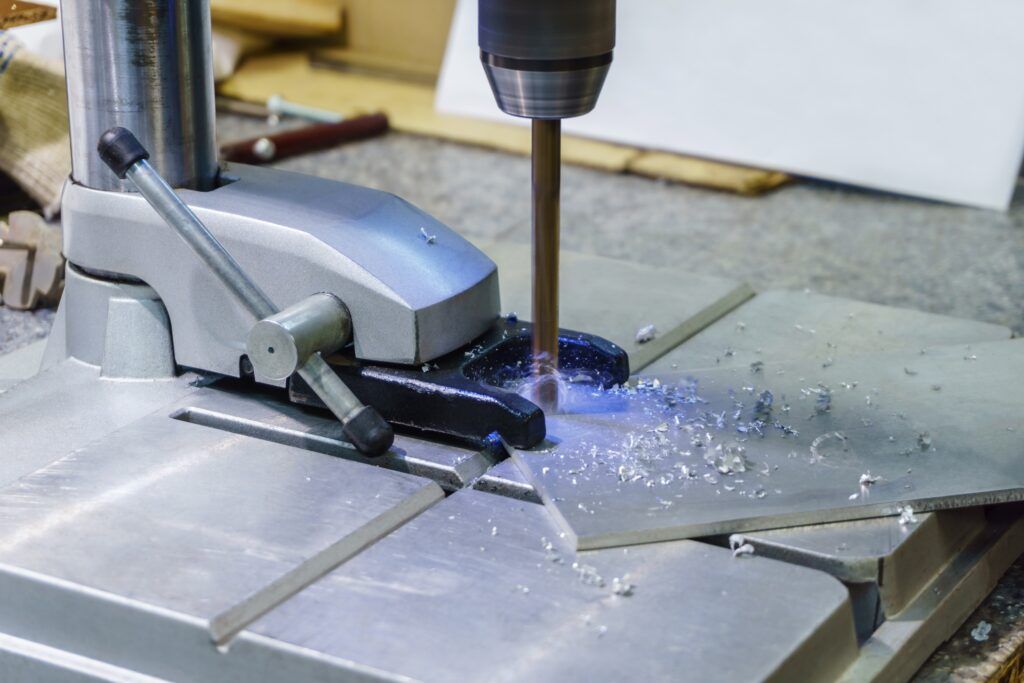
- Bench vise: Bench vises hold materials in place when making cuts, allowing for more precision and less risk of injury.
- Circular saw: Circular saws are one of the most common electric tools. They make simple straight cuts of wood and other materials with ease.
- Drills: Cordless drills can help drive in nails on various materials or drill holes in seconds.
- Electric chainsaw: Primarily used for cutting wood, electric chainsaws have a reduced noise level and are easier to maintain than their gas counterparts.
- Electric screwdriver: Less powerful than a drill but more convenient than a handheld screwdriver, an electric screwdriver uses a built-in motor to turn screws and rotate bits.
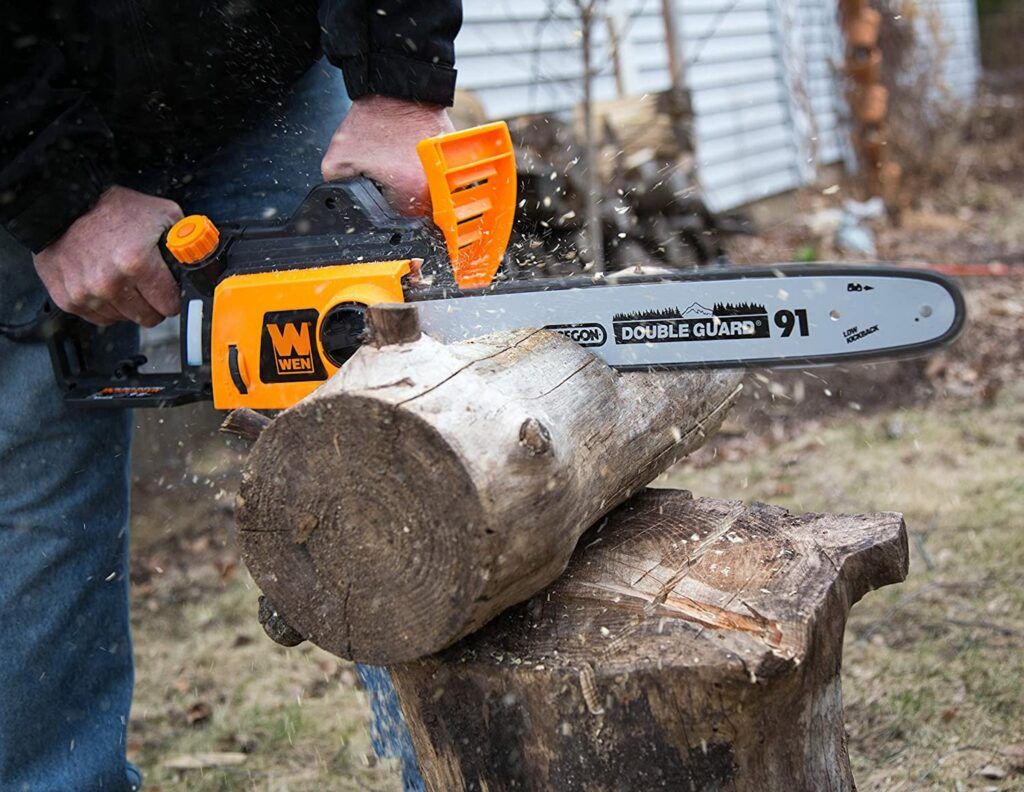
- Hammer drill: Similar to an impact driver, a hammer drill is an electric tool that will allow you to bore holes through hard surfaces.
- Heat gun: Heat guns deliver hot air to surfaces which is helpful for stripping paint, removing wallpaper, and sealing foam.
- Impact driver: Impact drivers repeatedly drive screws with heavy-duty power and torque.
- Jigsaw: Jigsaws cut curves, shapes, and bevels into materials such as wood, metal, and fiberglass.
- Log splitter: A log splitter does exactly what the name implies, cutting large pieces of wood into smaller pieces.
- Miter saw: Miter saws are useful for making precise cuts at various angles. Most people use them in carpentry or for cutting long boards.
- Nail gun (or nailer): Nail guns automatically drive in nails, eliminating the need to manually hammer them in place.
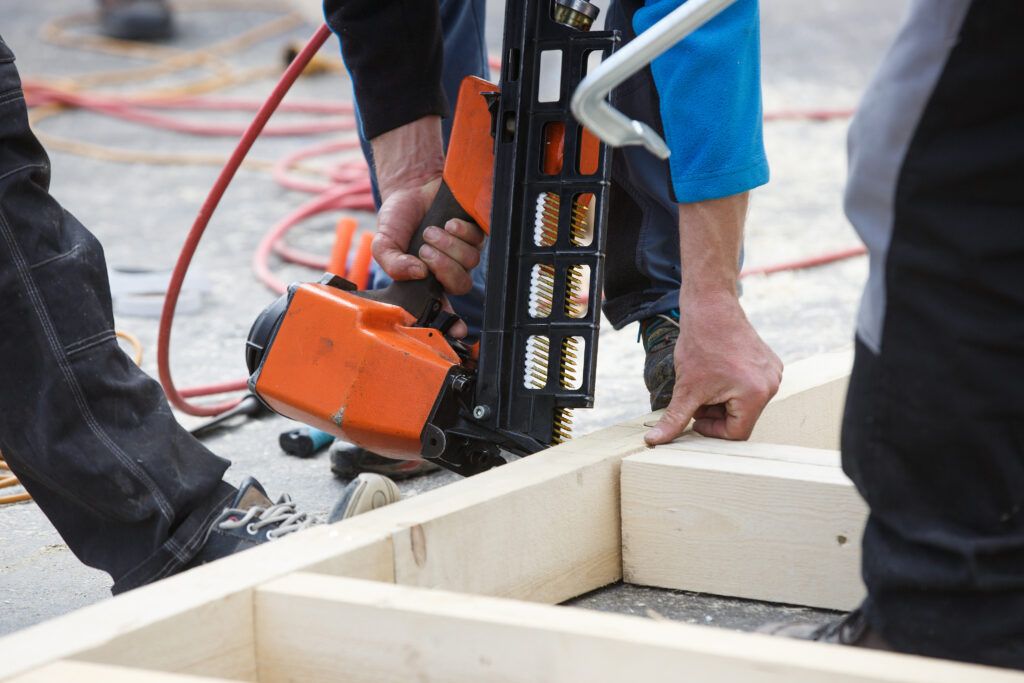
- Planer: A planer can help smooth out wood surfaces. Planers are available in handheld, electric, benchtop, and stationary models, depending on your needs and the size of your workspace.
- Pole saw: Due to their extended design, pole saws are perfect for reaching high areas, such as pruning large trees and shrubs or removing branches.
- Random orbital sander: Unlike belt sanders, random orbital sanders go in multiple directions without needing to sand with the grain, producing a finer finish that’s ideal for smaller pieces of wood.
- Reciprocating saw: Reciprocating saws can cut through difficult materials, making them a popular choice for construction or renovation projects.
- Rotary tool: A rotary tool is a handheld power tool with a fast-spinning motor that you can use for various tasks such as sanding, cutting, drilling, or polishing.
- Table saw: Table saws can make crosscuts, rip cuts, or dado cuts, making them a highly versatile woodworking tool for do-it-yourselfers (DIYers).
Tool Accessories and Measurement Tools
- Drill bits: Every toolbox should have a variety of drill bits on hand to match the size, cut, and material type of the hole that you need to drill.
- Flashlight: A high-quality flashlight can be handy in many DIY situations, such as when working in a dark area or when you need to look at a specific part of a machine that’s hard to see.
- Laser level: Laser levels reflect a beam along the horizontal and/or vertical axis, which helps create precise measurements for hanging or assembling items or even for when laying down pipes during construction projects.
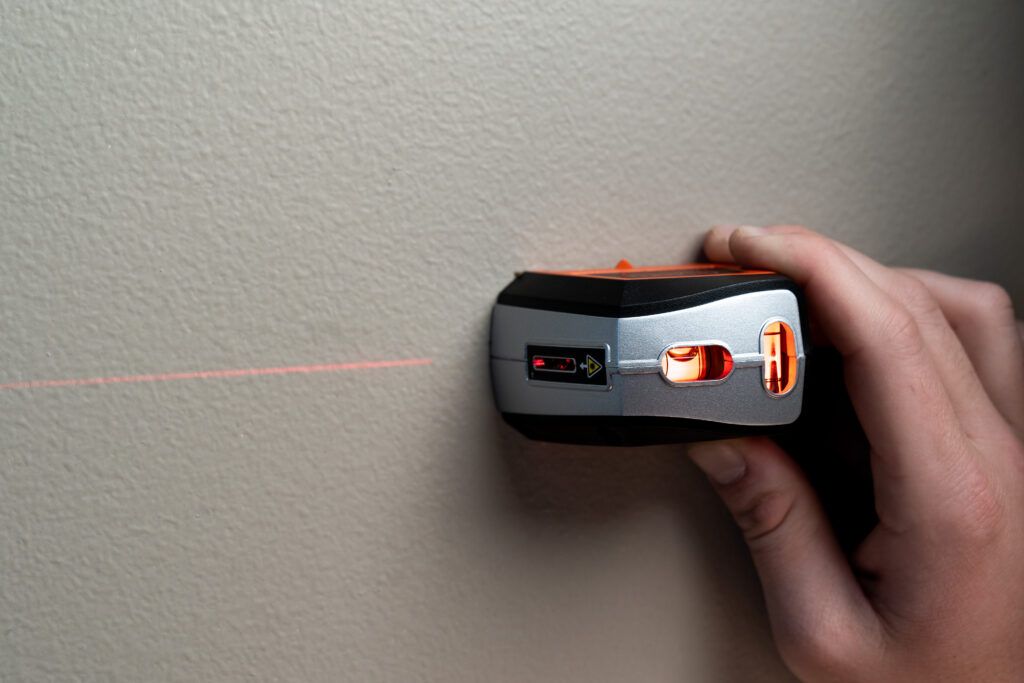
- Pocket hole jig: This tool makes it easy to drill an angled hole into a workpiece, where you can connect it to a second workpiece with a self-tapping screw.
- Safety glasses: Safety glasses help keep your eyes protected when using tools of any kind. They’re especially important to wear when working with materials that could fly off and hit you in the eye or face.
- Sawhorse: Sawhorses support boards or planks when sawing or painting.
- Shears: Shears are more powerful than standard scissors but perform the same function. You can use them for cutting through metal or for gardening and outdoor tasks.
- Socket set: Socket sets provide a wide range of sockets to secure a range of various nuts and bolts.
- Socket organizer: To keep all of your sockets organized in your garage, a socket organizer can keep them categorized by size so you can easily find the one you need.
- Staple gun: Staple guns can drive heavy staples into materials such as wood, wiring, or masonry.
- Stud finder: Stud finders help you locate studs inside your drywall, which can be helpful for hanging paintings, televisions, or other heavy objects.
- Tape measure: Tape measures can give exact measurements in your home, which can help you make sure you’re buying the right size furniture and appliances or make precise cuts on DIY projects.
- Utility knife: You often see utility knives in the kitchen, but they’re also useful in a toolbox, as they can slice through cardboard, polyvinyl chloride (PVC), and other light-duty materials.
- Washers: Washers are circular pieces of hardware that work to evenly distribute the force of a screw or nut.
- Work gloves: Any serious DIYer needs at least one quality pair of work gloves to keep their hands protected and clean while operating tools.
- Welding tables: Typical workbenches won’t work for welding projects, so a welding table is needed to handle the weight and heat.
Features To Look for in Tools
While each tool will have unique features, there are some common components you should look out for in whichever tool you buy. Below are some of the most important factors to consider when shopping for new tools.
Durability
Tools should be highly durable and withstand years of continuous use. Note the material the tool is made of and check reviews from other consumers to read about any potential issues with wear and tear. Tools made with heavy-duty materials such as metal are more likely to hold up than those made from a material like plastic.
You can also take steps to increase the durability of your tool by cleaning it regularly and only using it as intended.
Portability
Depending on the type of tool you’re using, its weight and portability may be important factors. Lightweight and cordless tools are easier to move from place to place and can adjust quicker than heavier tools. Many tools also come with convenient carrying cases, handles, or hooks that make them easy to move around.
Power Level/Speed
While lightweight tools are easier to carry, they may lack overall power, which is especially important when purchasing power tools. Tools with higher torque levels, revolutions per minute (RPM), or other heavy-duty power indicators will make finishing your project more efficient. However, there are some possible drawbacks to high-powered tools. First, they can be more difficult to operate and are cumbersome to move around. They may also present a significant barrier to entry for inexperienced consumers and will likely cost more than smaller, less robust tools.
Safety Features
Tools, especially power and electric tools, should have built-in safety features that help prevent accidents and protect you from misuse. For example, many tools come with molded grips that help protect your hands as you operate them. Others have an automatic shutoff that ensures they stop when they get overheated or tip over. Others feature a safety switch that can turn the tool off in an emergency. Tools should also come with specific instructions that help you operate them correctly and not damage the device.
Usability
Other than safety, the most important aspect of a tool is that it works properly and is easy to use. Tools that don’t function as intended can make working with them frustrating and possibly dangerous. Check individual product reviews and descriptions to estimate how simple it will be to use a tool, and look for specific product features that will make it easier to use. For example, cordless drills may be easier to maneuver than corded drills.
Ways To Keep Your Tools Organized
Once you’ve established your tool collection, the next step is keeping it organized. Here are some essential items to store your tools in your garage, shed or bring with you.
- Garage shelving: Keeping your toolboxes and other items organized on shelving units can help free up space in the middle of your garage and make it easy to locate items when you need them.
- Pegboard: A pegboard is a great way to display your tools and keep them organized and visible.
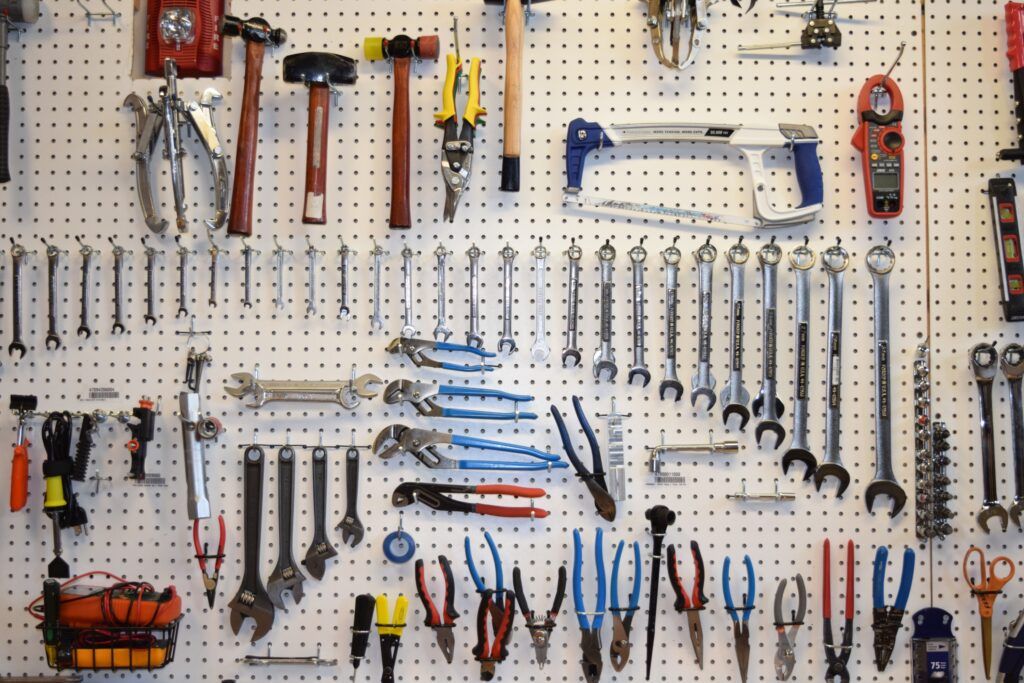
- Tool backpack: If you travel with tools a lot, a tool backpack is the perfect way to keep them on you at all times without having to physically carry them from place to place.
- Tool bag: Alternatively, a durable tool bag should be sufficient if you only plan on moving tools around your house or garage. Tool bags frequently come with various compartments that make it easy to store tools and keep them sorted properly.
- Tool belt: If you want to be able to quickly grab tools while working on a project, a tool belt provides instant access, reducing the need to keep returning to the toolbox.
- Toolbox: Any serious DIYer has at least one durable toolbox for storing all of their most trusted tools. Toolboxes come in various sizes and shapes to best match your DIY needs.
- Tool chest: Unlike a toolbox, a tool chest stores tools in drawers. Some also include a top table for setting tools down or completing small projects.
- Tool organizer: Finally, there are tool organizers, which typically take the form of a basket, small case, or shelf. These organizers are ideal for small hand tools or items such as nuts and bolts that need to be kept well organized.
Each of these solutions offers unique benefits and can cater to different storage needs. For instance, pegboards are excellent for visual organization, while tool chests are ideal for systematic storage. When selecting the best storage solutions, consider the layout and limitations of your workspace.
Tips for Staying Safe While Using Tools
Some tools have built-in safety features, but you can do more to operate the equipment safely. Below are some things you should always do when operating a power tool.
- Always wear safety equipment such as safety glasses, work boots, and gloves. You should also wear long sleeves and pants and avoid loose clothing and open-toed shoes.
- Check your tools regularly (when they’re unplugged) to verify they aren’t jammed or broken. If they are, don’t try to operate them until you fix the issue. If you start to feel resistance while you work, turn the device off and unplug or power it down immediately.
- Clear the area of potential hazards. Clear the floor and working station before you start working so you don’t accidentally run into something or trip over a loose item.
- Confirm you unplugged all tools and that they’re in a safe location after you finish working.
- Don’t operate machinery if you’re intoxicated or impaired in any way. You should also avoid using power tools if you’re tired or distracted.
- Keep children and pets clear of the area while you work to avoid any possible accidents.
- Keep your work area secure. You should have a dedicated working location with a sturdy base like a workbench.
Following these safety tips can greatly reduce the likelihood of accidents and injuries, ensuring a safer working environment.
What Are the Most Trusted Tool Brands?
While the best tool brand largely depends on the type of tool you are buying, some brands stand out as the most trusted among consumers. Some retailers known to make high-quality tools include the following:
- BLACK+DECKER
- Bosch
- Craftsman
- DeWalt
- Festool
- Hilti
- Husky
- IRWIN
- Kobalt
- Makita
- Metabo
- Milwaukee
- Porter-Cable
- RIGID
- RYOBI
- Skil
- WEN
These brands have built their reputations on delivering durable, reliable tools that professionals and homeowners trust. Researching specific tools and reading reviews can help you determine which brand best meets your needs for a particular project.
FAQs About Tools
How much should I spend on a high-quality tool?
The type of tool, power level, and brand will affect the price. Before making a purchase, consider how often you’ll use the tool. Are you buying it for a specific DIY project and don’t plan to use it regularly? Or are you looking to take up a new hobby, such as woodworking, that will require the tool to be used monthly or weekly?
Keep in mind that power tools, especially those with a high capacity, can be expensive. Hand tools will cost less but will also be more labor-intensive. If you’re taking up a new hobby and cost is a concern, try starting with a low-end power tool and see if it meets your needs. You can always upgrade later if needed.
When is the best month to buy tools?
When hunting for the best deals on tools, check for seasonal deals that may come about during Labor Day, Black Friday, Cyber Monday, or Amazon Prime Day. You may also find good deals on retailers in the spring before Father’s Day. However, individual brands may decide at any time to put their products on sale. Once you’ve identified the tools you’re looking for, check their Amazon store regularly to see if any products are discounted.
What are the first tools I should buy?
If you’re a new homeowner or a beginner just starting your tool collection, start with tools that will be easy to pick up and can serve multiple functions. A screwdriver set, hand saw, hammer, socket set, drill bits, adjustable wrenches, and a power drill will give you a good place to start, and you can add more tools as you get more comfortable.
To share feedback or ask a question about this article, send a note to our Reviews team at reviews@thisoldhousereviews.com.
